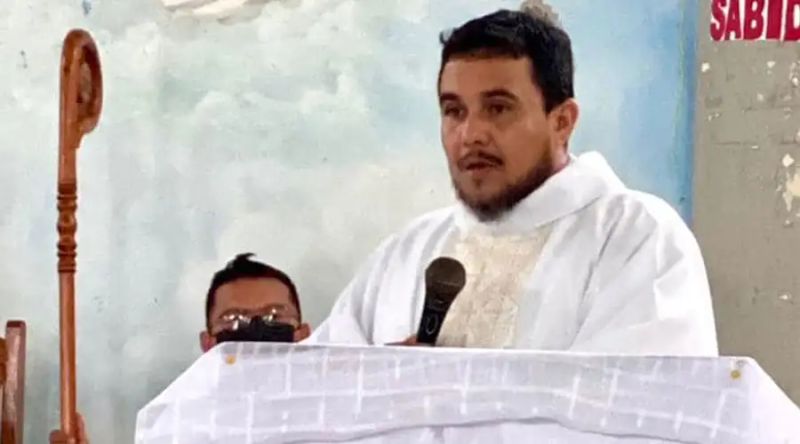
CNA Newsroom, Jan 17, 2023 / 14:30 pm (CNA).
The dictatorship of President Daniel Ortega in Nicaragua has found a Catholic priest, imprisoned since August 2022, guilty of “conspiracy” against the state.
According to the Nicaraguan media outlet 100% Noticias, Judge Nancy Aguirre of the Tenth Criminal District Trial Court of Managua found Father Oscar Benavidez Dávila guilty of the crimes of “conspiracy to undermine national security and sovereignty” and “spreading fake news.”
The prosecution is now asking for a sentence of eight years in prison for the priest, the pastor of Holy Spirit Parish in the town of Mulukukú in the Diocese of Siuna.
The accusations against the priest were made in September 2022 after he was held under arrest for 42 days in the Directorate of Judicial Assistance (DAJ) in Managua, better known as El Chipote, a prison notorious for torturing political opponents of the regime. The priest was apprehended Aug. 14, 2022, after celebrating Mass and was taken to the prison.
At that time, the Diocese of Siuna published a statement stating it didn’t know “the causes or reasons for his arrest and we hope that the authorities will keep us informed.”
The diocese also asked for prayers for Benavidez, whose “sole mission is and has been to announce the good news of Jesus Christ, who is the word of life and salvation for all.”
According to the priest’s defense, his “crime” was supposedly expressing his opinion in a social media post.
The Nicaraguan newspaper La Prensa reported that the priest was transferred in October 2022 to the Jorge Navarro Penitentiary System, a prison known as “La Modelo” located in the town of Tipitapa.
In total there are nine Nicaraguan priests that the dictatorship has accused of the crime of “conspiracy,” including the bishop of Matagalpa, Rolando Álvarez. At a Jan. 10 hearing, the bishop’s case was referred to trial.
This story was first published by ACI Prensa, CNA’s Spanish-language news partner. It has been translated and adapted by CNA.
If you value the news and views Catholic World Report provides, please consider donating to support our efforts. Your contribution will help us continue to make CWR available to all readers worldwide for free, without a subscription. Thank you for your generosity!
Click here for more information on donating to CWR. Click here to sign up for our newsletter.





Leave a Reply